Chris hall is a disabled hunter — with emphasis on ‘hunter.’
Sometimes, I really love my job and the way it helps me connect with so many amazing people. Folks like Andi Nail, the young lady with one arm who bowhunts and shoots in archery competitions and huntress Dymee Wooten, who consistently takes deer and turkey with her bow even though she’s blind in one eye. And on this occasion I’m thinking most about Chris Hall, a 25-year-old disabled hunter who chooses to crawl when he heads to the woods where, he says, he mostly hunts with a bow.
Chris contacted me recently about sharing his situation with others, because his mission in life is to help inspire others with disabilities that they can do more than they might think.
This is Chris’s story, and I think it’s best to let him tell it.
~ ~ ~ ~ ~ ~ ~ ~ ~ ~ ~ ~ ~ ~ ~ ~ ~ ~ ~ ~ ~ ~ ~ ~ ~ ~
My name is Christopher Hall.
I’m 25 years old and I’m from northern New York. I have had a leg disability since around age 5 and have relied on a wheelchair since age 15, but unfortunately my problem is still undiagnosed.
I usually crawl into the woods to hunt with my bow or rifle/shotgun (I mostly hunt with a bow). I am also a competition archer; I shoot indoor tournaments and a local league.
I want to show others what I go through to hunt. I not only hunt, I also film my hunts. Not for popularity, but to show people in a similar situation or with disabilities that obstacles can be overcame to enjoy your life and pursue your passion.
My hunting story probably starts a little differently than most others, as I was battling inner demons and physical limitations when my fascination with the outdoors began.
First Signs of Trouble
Although I appeared like any other kid in elementary school, my teacher noticed my feet slapping together when I walked down the hallway. Concerned, she sent a note home to my mother and suggested someone in the orthopedic field look at the issue.
It was quickly discovered that I had no ankle reflexes, which sent my parents on a journey to get to the root of the problem. We traveled to Rochester, N.Y., to see Dr. Carlos Torres, who referred me to Shriner’s Hospital in Springfield, Mass., where I was able to get AFO leg braces to help me properly walk heel-to-toe.
After many years of traveling between these two places, I was sent to Johns Hopkins University in Baltimore. After the doctor examined me and did many tests, he concluded it was all in my head and told my parents there was nothing he could do because he believed I was making up the problem.
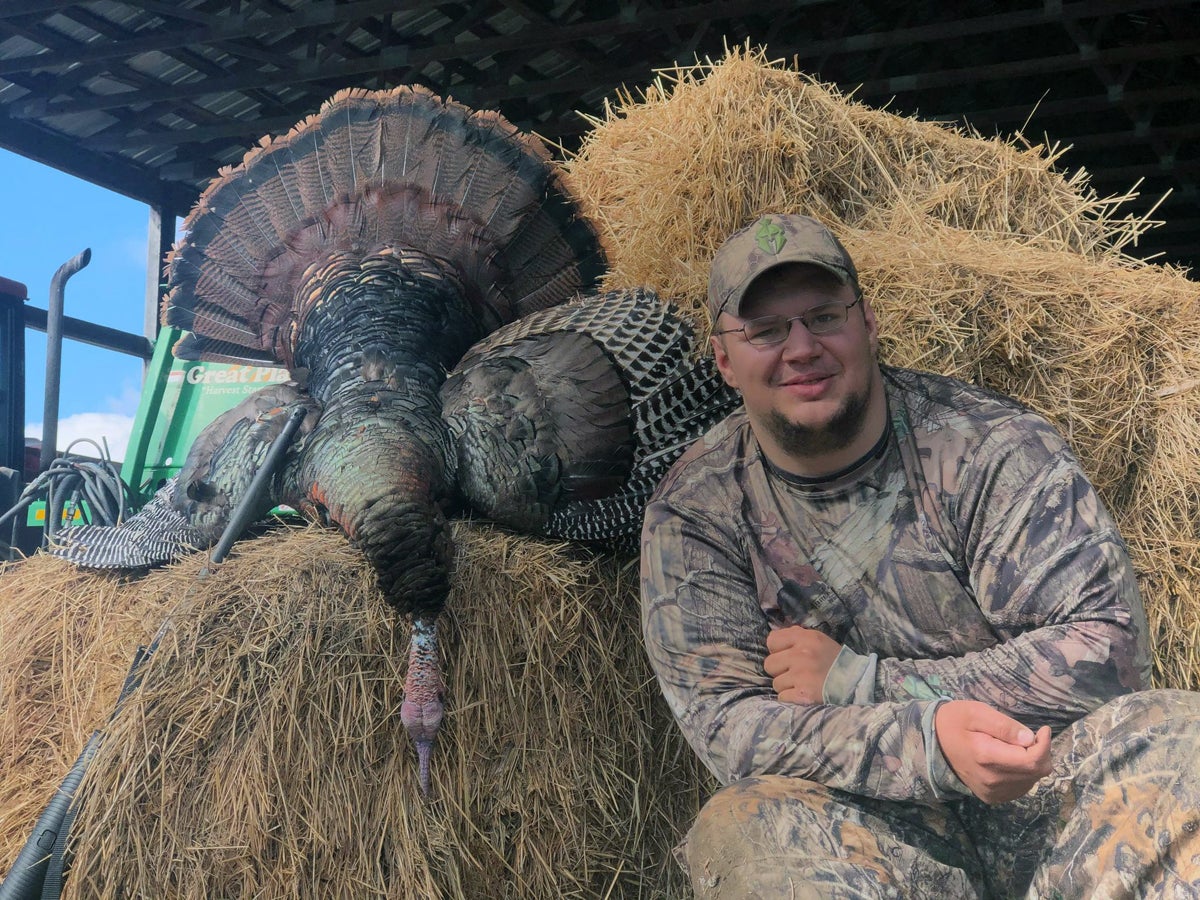
While doctors experimented with leg braces, my mother contacted the Mayo Clinic in Rochester, Minnesota and scheduled a meeting. Over the next two years, many tests were performed, including the “Heat Test,” in which I was made to stand, covered in yellow powder, under two heat lamps to see if my sweat glands worked properly. [Editor’s note: I wonder what this has to do with ankles.]
All tests returned nothing of any significance, and there I was at 12 years old with the functionality of my legs deteriorated to almost nothing. I could no longer do many of the things I loved to do, so I became interested in hunting and decided to take the course to get a hunting license.
From ‘Disabled’ to ‘Disabled Hunter’
That fall, although I could only walk with leg braces, my father took me small game hunting. We had an incredible time even though the pain in my legs kept me from being able to fully enjoy the experience. That time in the woods with my dad lit a fire in me that is still burning today. I enjoyed being part of nature and taking in everything around me.
I finally felt like I was at peace as I sat and watched squirrels jump from branch to branch, and saw turkeys pick their way across cut cornfields. I enjoyed watching deer in far-off meadows and realized I could pursue this passion — even if I didn’t have legs that would allow me to run, walk, or stand.
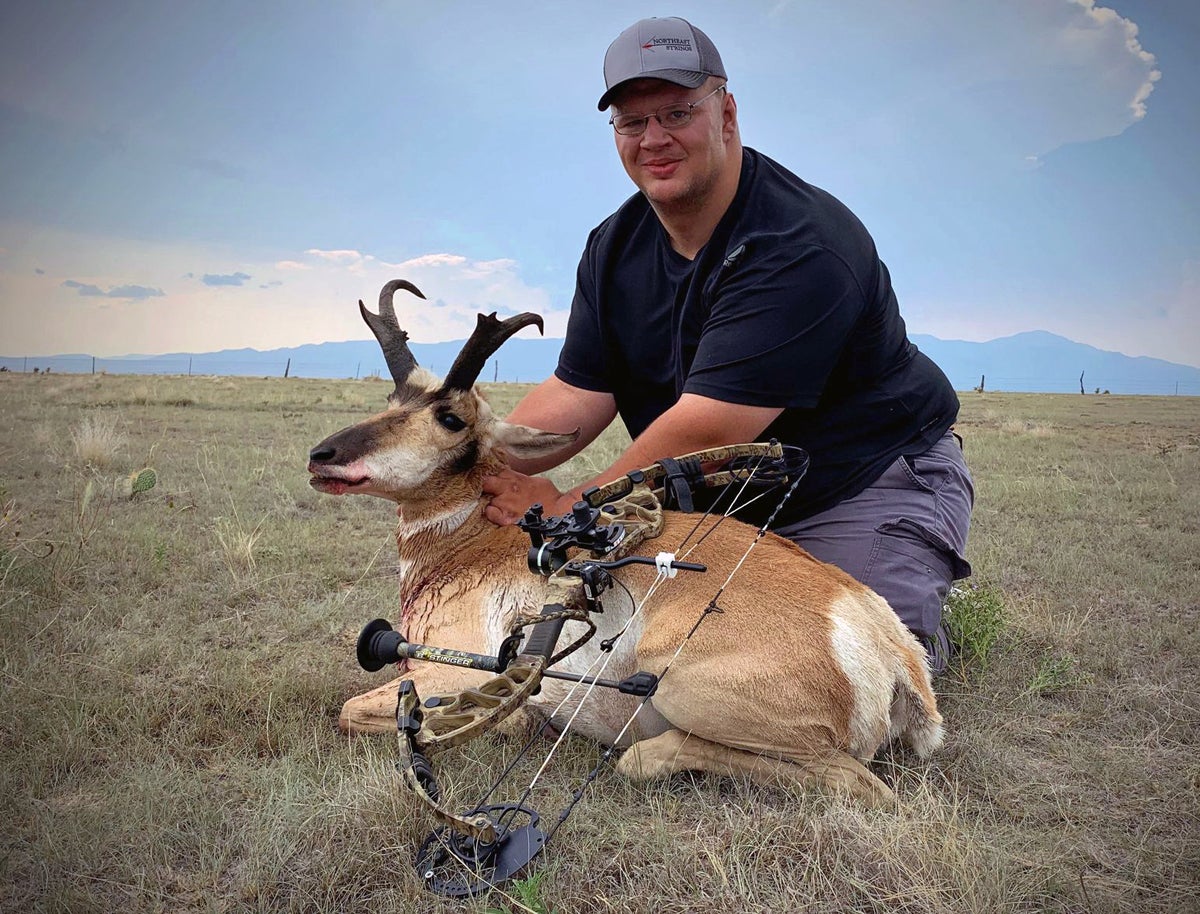
Within two years, the pain from the leg braces became excruciating, and I made the difficult decision to rely on a wheelchair full-time. This was something I had dreaded since childhood, but living in constant pain wasn’t something I wanted to wrestle with anymore.
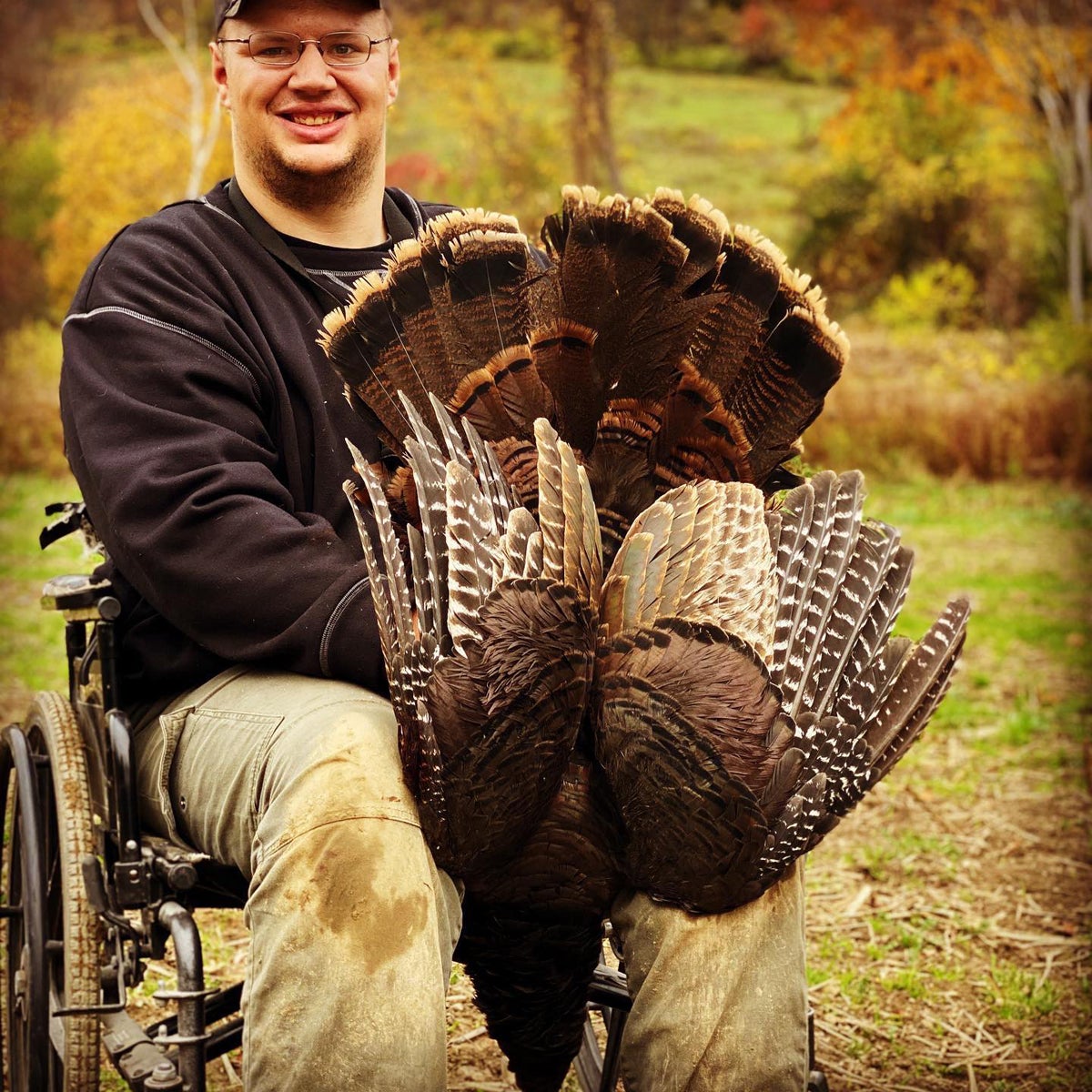
My friends and family helped me come to terms with my decision by making me realize that being in a wheelchair did not make a difference. I returned to the woods the following year, and began crawling to get to everywhere I wanted to hunt. I enjoy the physical and mental workout it gives me every time I go afield. Now, 10 years later, I still prefer to crawl instead of using an ATV.
Call me stubborn, but the crawling gives me the ability to become more closely linked to what I’m doing. I often feel like I’m one of the animals making its way through the brush as my hands go forward and my knees follow behind them.
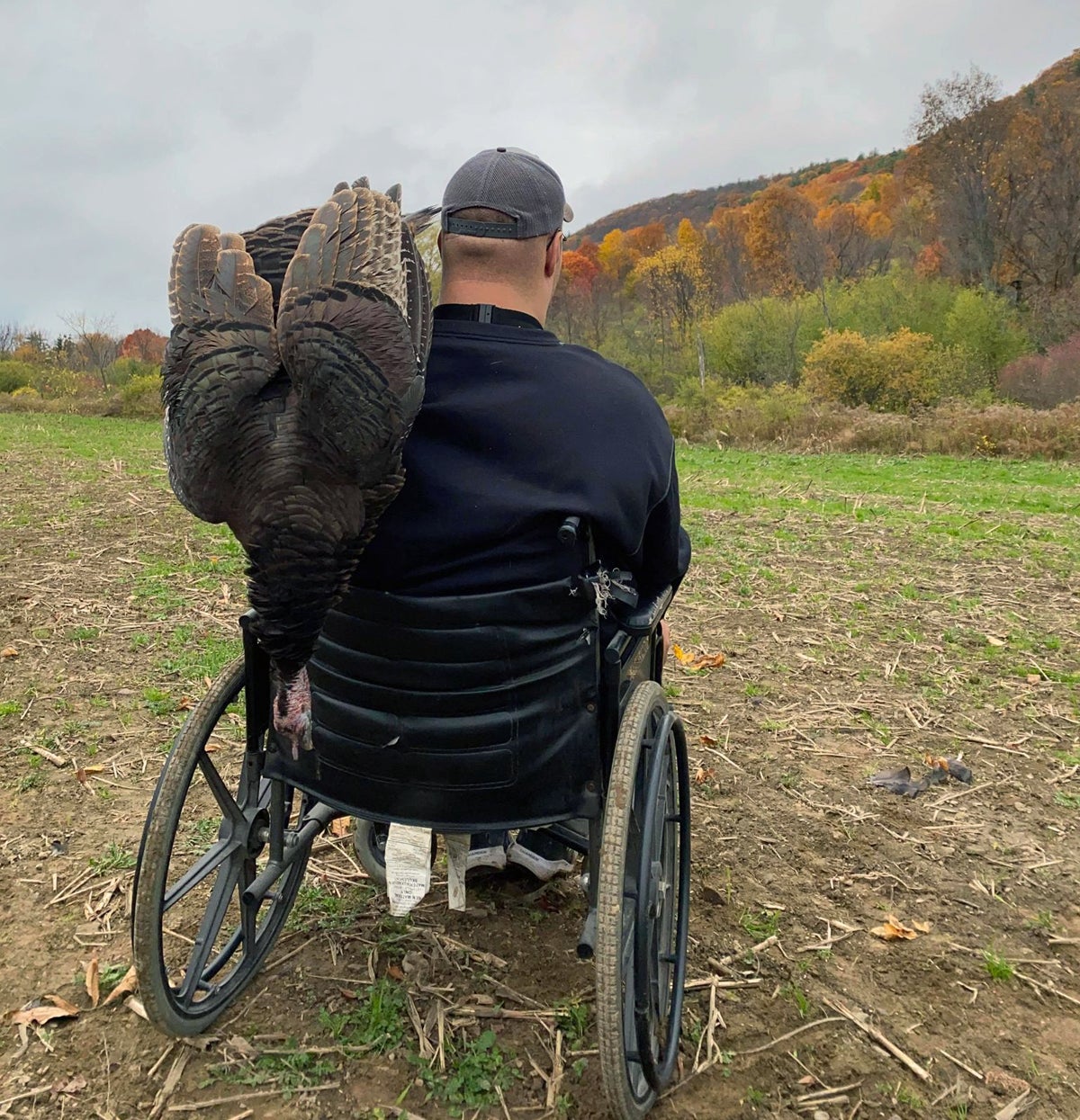
Sometimes it takes me hours to cover the distance I must go, but in my mind, the hours wrap around the geese I hear as they make their annual pilgrimage south. The crows remind me that they, too, cackle back and forth like bickering humans. The coyotes howling in the darkness gently alert me that I’m a creature in their domain, and the gobbling turkeys make me aware that love has no boundaries — and it’s okay to sound off for the ladies every now and then, so they don’t forget you’re available.
Crawling has allowed me to become more intimately connected with the animals, and I’m thankful for that opportunity.
This journey has allowed me to appreciate the dedication and passion that drives me to succeed, and it has increased my determination and love for the sport. I could sit in my wheelchair complaining about the hand that has been dealt to me, but that would require more energy than I’m willing to expend on something over which I have absolutely no control. Instead, I accept the added challenges of my condition and I choose to work even harder to show others that they can accomplish anything they want to do if they have enough heart.
~ ~ ~ ~ ~ ~ ~ ~ ~ ~ ~ ~ ~ ~ ~ ~ ~ ~ ~ ~ ~ ~ ~ ~ ~ ~
Less than one month ago, Chris harvested his first whitetail deer.
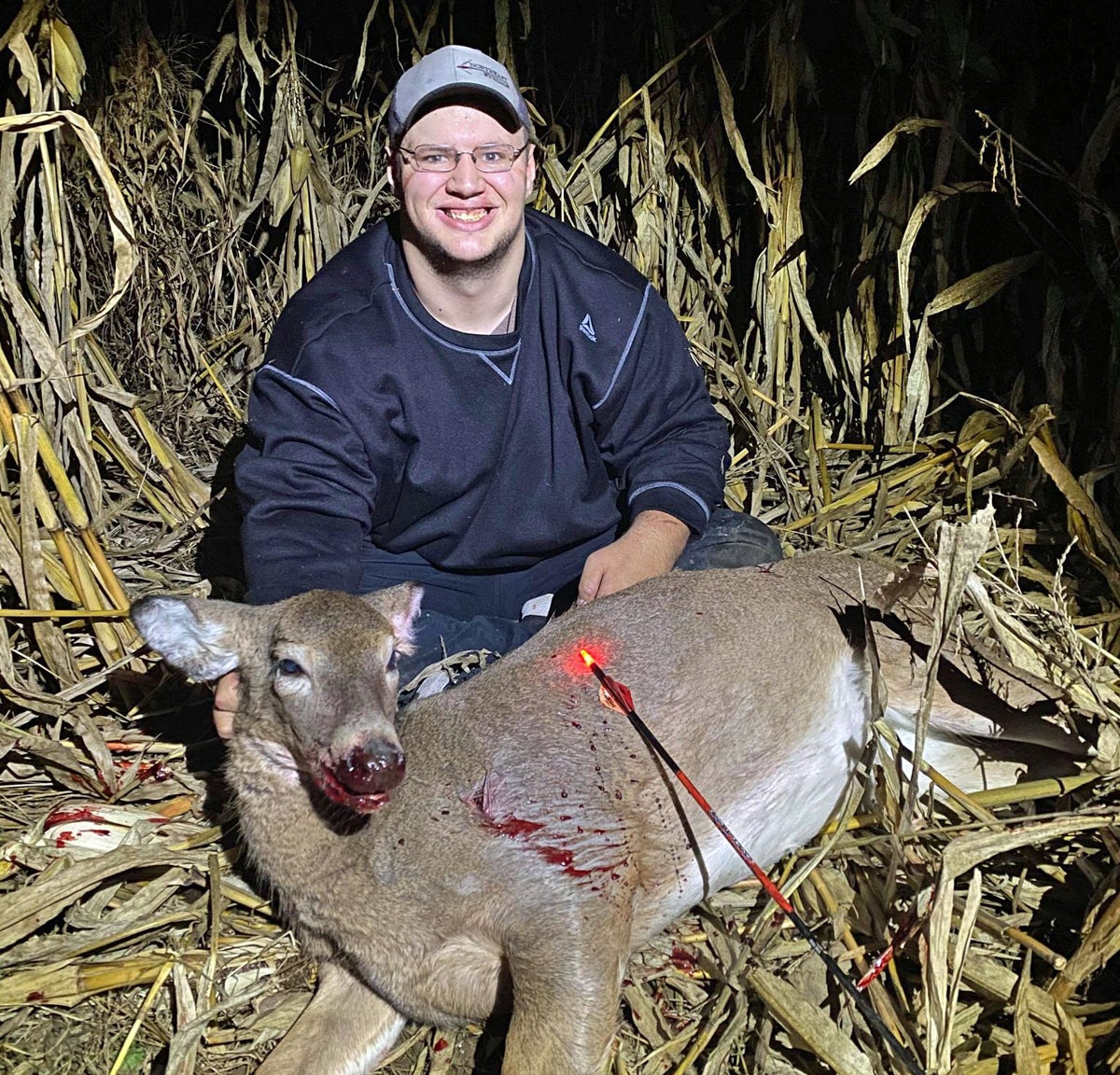
The dirty knees of Chris’s britches in some of these photos should remind most of us to be thankful we can walk — but also to consider the advantages of moving low and slow while hunting.
I can’t think of much else to add, other than to thank Chris for the honor of sharing his story with y’all — and to wish him lots of good luck in his hunting endeavors.
The post Disabled Hunter Chris Hall is an Inspiration to Others appeared first on AllOutdoor.com.


